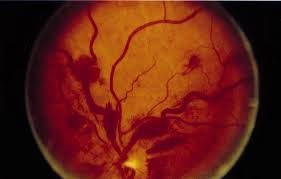What Is Waldenstrom’s Macroglobulinemia Disease?
Your immune system produces cells that protect your body against infection. One such cell is the B lymphocyte, which is also known as a B cell. B cells are made in the bone marrow. They migrate and mature in your lymph nodes and spleen. They can become plasma cells, which are responsible for releasing an antibody known as immunoglobulin M, or IgM. Antibodies are used by your body to attack invading diseases.
In rare cases, your body may begin to produce too much IgM. When this happens, your blood will become thicker. This is known as hyperviscosity, and it makes it difficult for all of your organs and tissues to function properly. This condition in which your body makes too much IgM is known as waldenstroms macroglobulinemia disease. It’s technically a type of cancer.
Waldenstrom’s disease is a rare cancer. The American Cancer Society (ACS) reports that there are about 1,100 to 1,500 cases of Waldenstrom’s Macroglobulinemia disease diagnosed each year in the United States. The disease is a non-Hodgkin lymphoma that grows slowly. Waldenstrom’s disease is also known as:
- Waldenstrom’s macroglobulinemia
- lymphoplasmacytic lymphoma
- primary macroglobulinemia
What Symptoms of Waldenstrom’s Macroglobulinemia Disease?
The symptoms of waldenstrom’s macroglobulinemia will vary based on the severity of your condition. In some instances, people with this condition have no symptoms for waldenstrom’s macroglobulinemia. The most common waldenstrom’s macroglobulinemia symptoms of this disease are:
- weakness
- fatigue
- bleeding from the gums or nose
- weight loss
- bruises
- skin lesions
- skin discoloration
- swollen glands
If the amount of IgM in your body becomes severely high, you may experience additional symptoms. These symptoms frequently occur as a result of hyperviscosity and include:
- vision changes, including blurry vision and vision loss
- headaches
- dizziness or vertigo
- changes in mental status
What Causes of Waldenstrom’s Macroglobulinemia Disease?
Waldenstrom’s macroglobulinemia causes develops when your body overproduces IgM antibodies. The causes of waldenstrom’s macroglobulinemia is unknown.
The condition is more common among people who have family members with the disease. This causes for waldenstrom’s macroglobulinemia suggests it may be hereditary.
How Is Waldenstrom’s Disease Diagnosed?
To diagnose this disease, your doctor will start by performing a physical exam and ask you about your health history. Your doctor may check for swelling in your spleen, liver, or lymph nodes during the exam.
If you have symptoms of Waldenstrom’s disease, your doctor may order additional tests to confirm your diagnosis. These tests may include:
- blood tests to determine your level of IgM and to evaluate the thickness of your blood
- a bone marrow biopsy
- CT scans of bones or soft tissue
- X-rays of bones or soft tissue
CT scan and X-ray of the bones and soft tissues are used to differentiate between Waldenstrom’s disease and another type of cancer called multiple myeloma.
What Treatment of Waldenstrom’s Macroglobulinemia Disease?
Many people says there is no treatment of waldenstrom’s macroglobulinemia disease. However, waldenstrom’s macroglobulinemia treatment can be effective for controlling your symptoms. Treatment for waldenstrom’s macroglobulinemia will depend on the severity of your symptoms. If you have Waldenstrom’s disease without any symptoms of the disorder, your doctor may not recommend any treatment. You may not require treatment until you develop symptoms. This may take several years.
If you have symptoms of the disease, there are several different treatments your doctor may recommend. These include:
Chemotherapy
Chemotherapy is a medicine that destroys cells in the body that grow quickly. You can get this treatment as a pill or intravenously, which means through your veins. Chemotherapy for Waldenstrom’s disease is designed to attack the abnormal cells producing the excess IgM.
Plasmapheresis
Plasmapheresis, or plasma exchange, is a procedure in which excess proteins called IgM immunoglobulins in the plasma are removed from the blood by a machine, and the remaining plasma is combined with donor plasma and returned to the body.
Biotherapy
Biotherapy, or biological therapy, is used to boost the immune system’s ability to fight cancer. It can be used with chemotherapy.
Surgery
It’s possible your doctor may recommend surgery to remove the spleen. This is called a splenectomy. People who have this procedure may be able to reduce or eliminate their symptoms for many years. However, the symptoms of the disease often return in people who’ve had a splenectomy.
Clinical Trials
Following your diagnosis, you should also ask your doctor about clinical trials for new medications and procedures to treat Waldenstrom’s disease. Clinical trials are often used to test new treatments or to investigate new ways to use existing treatments. The National Cancer Institute may be sponsoring clinical trials that may provide you with additional therapies to combat the disease.
Natural herbal treatment for waldenstrom’s macroglobulinemia
This is the way to treat lymphoplasmacytic lymphoma, is a type of cancer affecting B cells, a type of white blood cell with Durical natural herbal products safely. Treatment by waldenstrom’s macroglobulinemia natural remedies we prefer the Herbal Care Products company, who are create natural products for patients. waldenstrom’s macroglobulinemia herbal remedies is the epdiical product. Best waldenstrom’s macroglobulinemia natural treatment help to improve scrotum disease & waldenstrom’s macroglobulinemia herbal treatment have no side effects.
What Is the Long-Term Outlook?
If you’re diagnosed with Waldenstrom’s disease, the outlook will depend on the progression of your disease. The disease progresses at different rates depending on the person. Those who have a slower disease progression have a longer survival time compared with those whose disease progresses more quickly. According to an article in Blood Cancer Journal, the outlook for Waldenstrom’s disease can vary. Average survival spans from five to nearly 11 years after diagnosis.
Source Link : http://www.healthline.com/health/macroglobulinemia-of-waldenstrom#Overview1


